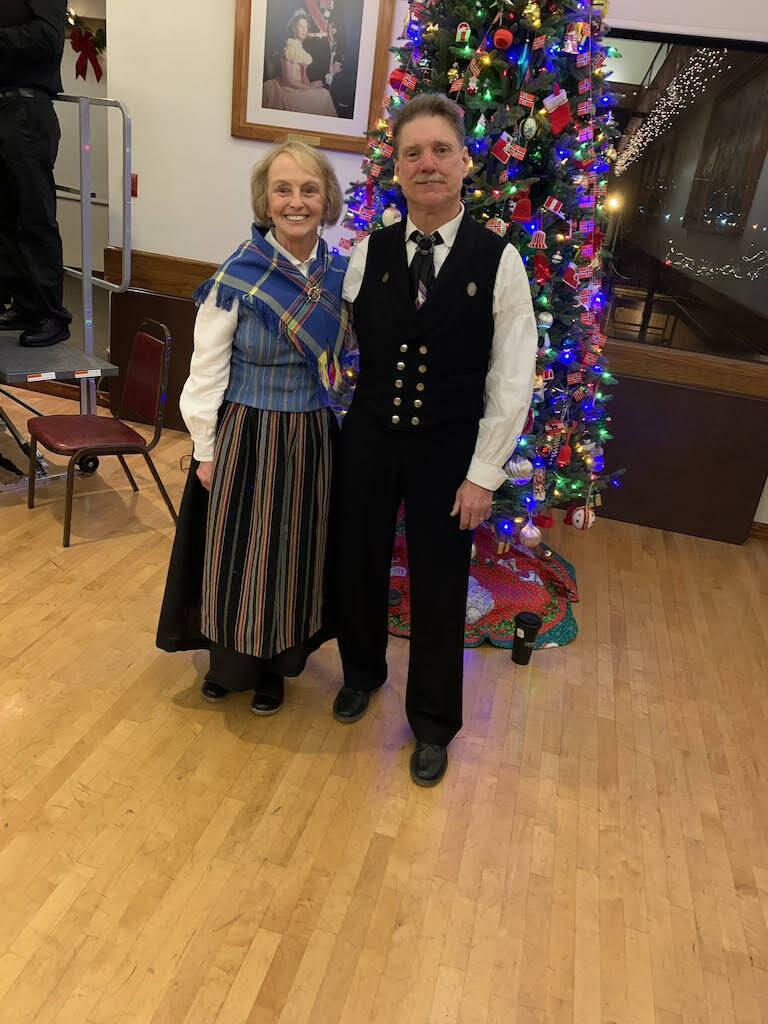Homer Council on the Arts hosted a week of Norwegian traditional arts, featuring musician Rachel Nesvig on the Hardanger and flat fiddle, the national folk instrument of Norway, and Judy Patterson and Jerry Walsh, who will provide workshops in ‘Telegangar’, Scandinavian dance.
The artists are visiting from Seattle. Kiki Abrahamson will also present an embroidery workshop at the HCOA gallery.
The final showcase performance is at the Homer High School Green Room March 10 at 6 p.m. There will be an additional family friendly dance workshop on Saturday, March 11 from 10 a.m.-12 p.m., also at the Green Room.
Artists are providing workshops to Homer youth as well. On Wednesday, Paul Banks hosted a workshop. On Thursday, March 9, the artists head to Seldovia by water taxi for school outreach and a community performance. The group has been working on plans for the event for six months.
In an interview Monday, Walsh explained the Hardangar fiddle, an eight- or nine-string instrument that he performs with.
“There are four strings that you play and there are four or five that run under the finger board,” Walsh said.
“You’re always playing two notes at once and it sounds very dron-y. It’s higher sounding and very ornate, painted with roses,” Nesvig added.
“It’s a very beautiful instrument, decorated with mother of pearl in-lay in the finger board,” Patterson said.
It might also be decorated with animals: a dragon, lion or dog.
“It just depends on the fiddle, it’s gorgeous,” said Nesvig, who has many YouTube pieces available to view for examples.
Walsh shares their favorite Norwegian joke: “The hardangar player spends the first 10 years learning how to tune and the next 10 years playing out of tune.”
The instrument developed in the Hardangervidda, the central southern plateau area of Norway. It looks like a violin, but it is a very different instrument.
Originally, Nesvig was looking to come to Homer on her own for some gigs with local artist Mannfried Funk and she pitched to Patterson and Walsh the idea of including dance because she’s participated in several Scandinavian art festivals with them in the past. They were up for it. The trio is a new collaboration.
Patterson and Walsh are both teachers at the Skandia Folk Dance Society in Seattle, founded in 1949 for the preservation and teaching of traditional dance culture and music of the Nordic lands. Walsh is currently president of the organization. Patterson started studies in Scandinavian dance in the late 1970s and has made more than 17 trips to Finland, Norway and Sweden with Walsh. Some of their favorite dances are set to the Hardangar fiddle, traditionally used as a solo instrument to provide music for dancers.
“My feet will provide the beat for the dancers, particularly if it’s a tune they don’t know or if it’s a challenging tune,” Nesvig said. “There is a real interplay between the music and dance; it’s a thing unto itself,” Walsh added.
Patterson shared some more history of the fiddle in Scandinavian culture: There was a period several centuries ago when the fiddle was banned from Sweden and Norway.
“I have a friend from Norway who just told me this story of a relative who rowed out to the middle of a lake to throw his fiddle away because it was mandated by the church. So, the fact that this music is still played and embraced is fascinating,” she said.
Nesvig remarks that the Hardanger fiddle is having somewhat of a second wave of interest in Norway.
“I think people are realizing that if the tradition isn’t kept up, the heritage of the instrument will also die,” she said.
In Scandinavia, “we’re kind of at the end of a cultural pattern that started in the 1970s. They call it the Green Wave,” Walsh explained. “All the grandchildren of fiddle players are asking their grandparents about the fiddles. It’s kind of like it skipped a generation, same with the dancing.”
“And now people are making their life work into finding out how people did these dances in an obscure way in the early 1930s and now getting a written description and sometimes a film,” he said.
This type of interest exploded and peaked in the 1980s with events such as outdoor dance competitions with hundreds of couples competing to perform the Swedish National Dance, the Hambo.
For the Homer performance, the dancers will perform a variation of Norwegian and Swedish dances. Some are significantly combined. One dance that Walsh mentions is from the border region of the two countries with a more intertwined culture and is called the Finnskogspols.
The trio explained that music and dance have different dialects from valley to valley and the dialects in music correspond to variations you hear in language.
“It’s all related to cultural components and that’s something that keeps us really intrigued,” said Walsh.
“The dialects in the country are very strong. If you hear something in Oslo it sounds extremely different than what you’ll hear in Stavangar and yes, it’s the same with music. This makes the Hardangar very hard to play with other people because you all have a different dialect of the same tune and there is often alot of improvisation,” Nesvig said.
For example, she explained, “If you are playing for people who are dancing and you think they need to spin more, you might play that same lick again and that can be hard to communicate with another fiddler.”
Join the trio for an evening of Scandinavian Performance at the Homer High School Green Room on Friday.
Emilie Springer can be reached at emilie.springer@homernews.com.


